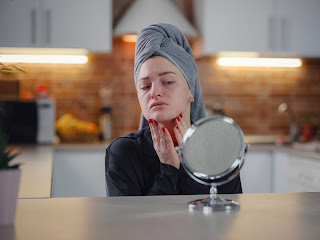From Topical Creams to Laser Therapy: A Comprehensive Guide to Acne Scar Removal
Acne scars are a persistent reminder of past battles with acne, affecting not just the skin but also self-esteem. Fortunately, advancements in dermatology offer a wide array of treatments to diminish or even eliminate acne scars. From topical creams to advanced laser therapies, understanding the options available can empower individuals to make informed decisions about their skincare. This comprehensive guide explores the causes of acne scars, types of scars, and the latest treatments to effectively remove them.
Understanding Acne Scars
Acne scars develop as a result of inflammatory acne lesions, which damage the skin's collagen and elastin fibers during the healing process. The severity and type of scars vary, influenced by factors such as genetics, skin type, and the intensity of the acne. The primary types of acne scars include:
Atrophic Scars: These are depressed scars caused by a loss of tissue. They include:
Icepick Scars: Small, deep holes in the skin.
Boxcar Scars: Broad depressions with sharply defined edges.
Rolling Scars: Wide, shallow indentations with sloping edges.
Hypertrophic and Keloid Scars: Raised scars resulting from excessive collagen production during the healing process.
Understanding the type of scars is crucial for determining the most effective treatment approach.
Treatments for Acne Scar Removal
Advancements in dermatological treatments have revolutionized acne scar removal, offering both non-invasive and surgical options. The choice of treatment depends on scar type, skin tone, downtime tolerance, and desired results. Here are some of the most effective treatments available:
Non-Invasive Treatments
Topical Treatments:
Retinoids: Derived from vitamin A, retinoids promote cell turnover and collagen production, improving scar appearance over time.
Vitamin C: Acts as an antioxidant, brightening the skin and improving collagen synthesis.
Alpha Hydroxy Acids (AHAs): Exfoliate the skin and improve texture.
Chemical Peels:
Superficial Peels: Exfoliate the outer layer of the skin, improving mild scars and discoloration.
Medium to Deep Peels: Penetrate deeper layers, improving moderate to severe scars.
Microdermabrasion:
Exfoliates the outer layer of the skin, reducing the appearance of superficial scars and promoting collagen production.
Minimally Invasive Treatments
Microneedling:
Creates controlled micro-injuries to stimulate collagen production and improve scar texture.
Laser Treatments:
Fractional Laser Resurfacing: Targets specific areas of the skin, promoting collagen production and improving scar texture.
CO2 Laser Resurfacing: Removes layers of skin tissue, stimulating collagen production and improving severe scars.
Surgical Treatments
Punch Techniques:
Punch Excision: Removes individual scars and sutures the skin closed.
Punch Elevation: Elevates depressed scars to the level of surrounding skin.
Subcision:
Breaks the fibrotic strands that tether the scar to underlying tissue, allowing the skin to elevate and fill in.
Choosing the Right Treatment
Selecting the appropriate treatment involves a comprehensive assessment by a dermatologist or skin care specialist. Factors to consider include:
Type and Severity of Scars: Different scars respond better to specific treatments.
Skin Type and Tone: Certain treatments are more suitable for lighter or darker skin tones.
Downtime: Recovery periods vary depending on the treatment intensity.
Cost: Treatment costs can vary widely, influencing decision-making.
Post-Treatment Care and Considerations
After undergoing acne scar removal treatment, proper post-care is essential for optimal results. This may include:
Sun Protection: UV exposure can worsen scars and hinder healing.
Skin Care Regimen: Using gentle cleansers and moisturizers recommended by your dermatologist.
Follow-up Appointments: Monitoring progress and adjusting treatment plans if necessary.
Conclusion
Acne scar removal treatment has evolved significantly, offering effective solutions for various scar types and skin tones. Whether opting for non-invasive methods like topical treatments and chemical peels or more intensive approaches such as laser treatments and surgical techniques, consulting with a qualified dermatologist ensures personalized care and optimal outcomes. By understanding the causes of acne scars and the range of available treatments, individuals can embark on a journey towards smoother, clearer skin and enhanced self-confidence.
Acne scars need not be a permanent fixture—modern dermatology provides the tools to effectively diminish their appearance, empowering individuals to feel comfortable and confident in their skin once more.




Comments
Post a Comment